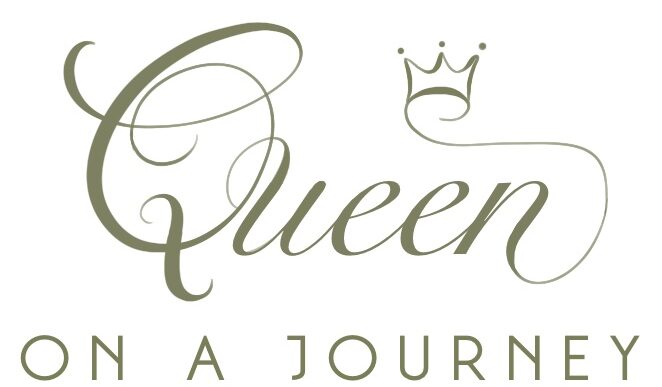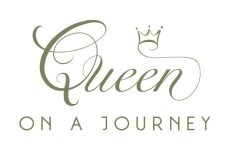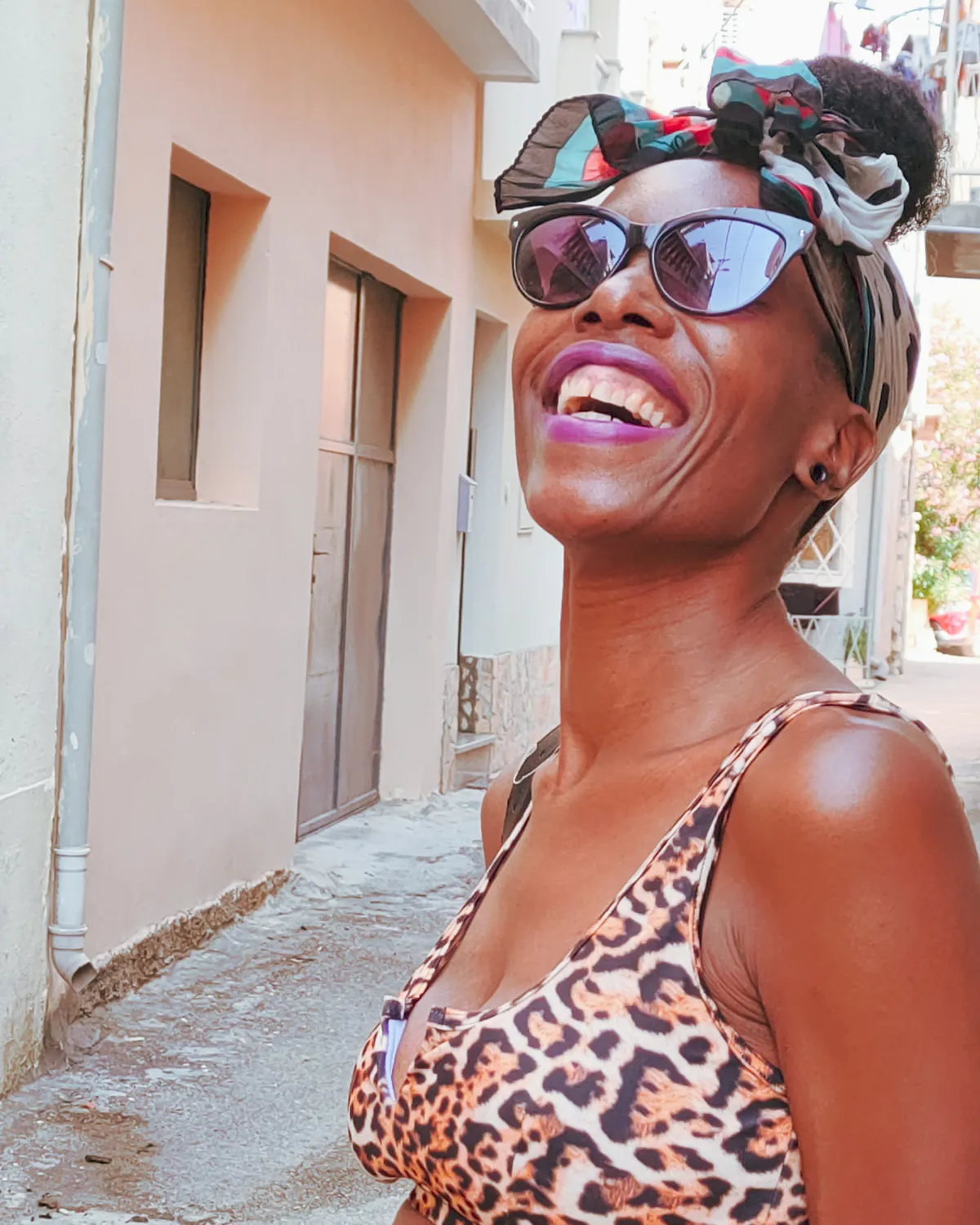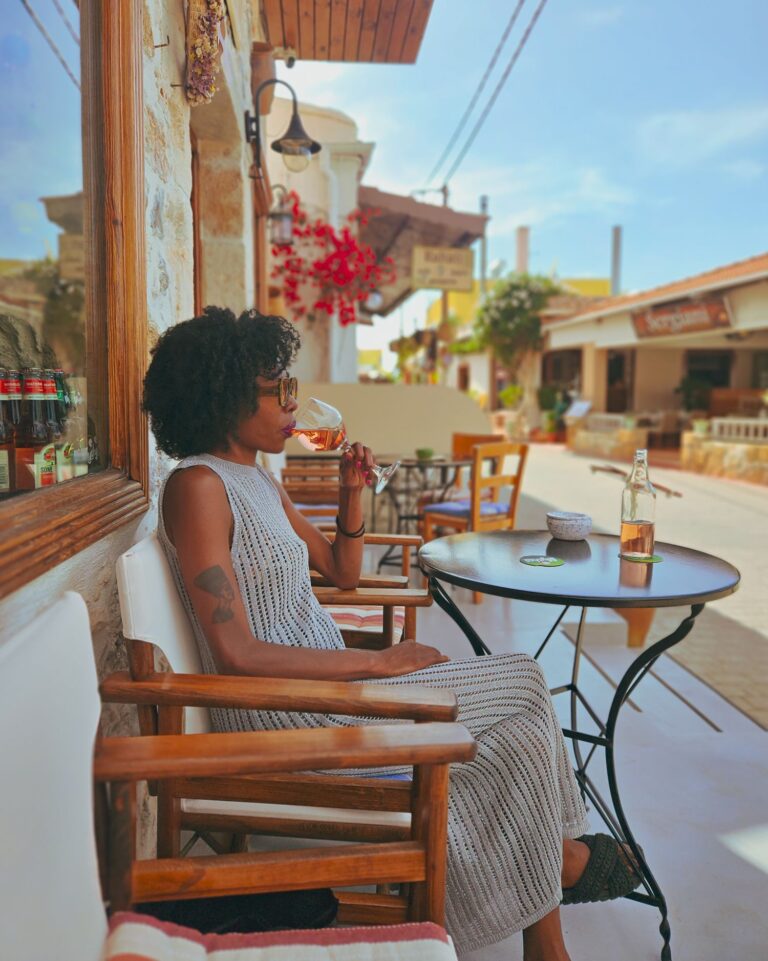As I draw near to the Nubian village, I feel like I am journeying back to ancient times. It is very quiet and appears almost abandoned, in complete contrast to the city of Aswan.
Dusty deserted roads, a shepherd ushering sheep and tuk-tuks zipping by. There are also numerous camels, but especially distinctive are the brightly coloured houses.

The Bazaar
The road through the village’s Bazaar is very narrow and meandering, and contrary to my initial impression, incredibly lively. It overflows with people both locals and tourists alike selling, bargaining and browsing.
Some men gathered around a fire in a front yard holler out to invite me in for tea.
The scent of spices and fragrances emanating from the market stores waft in the delicate evening breeze. I am advanced by women and children selling handmade goods.
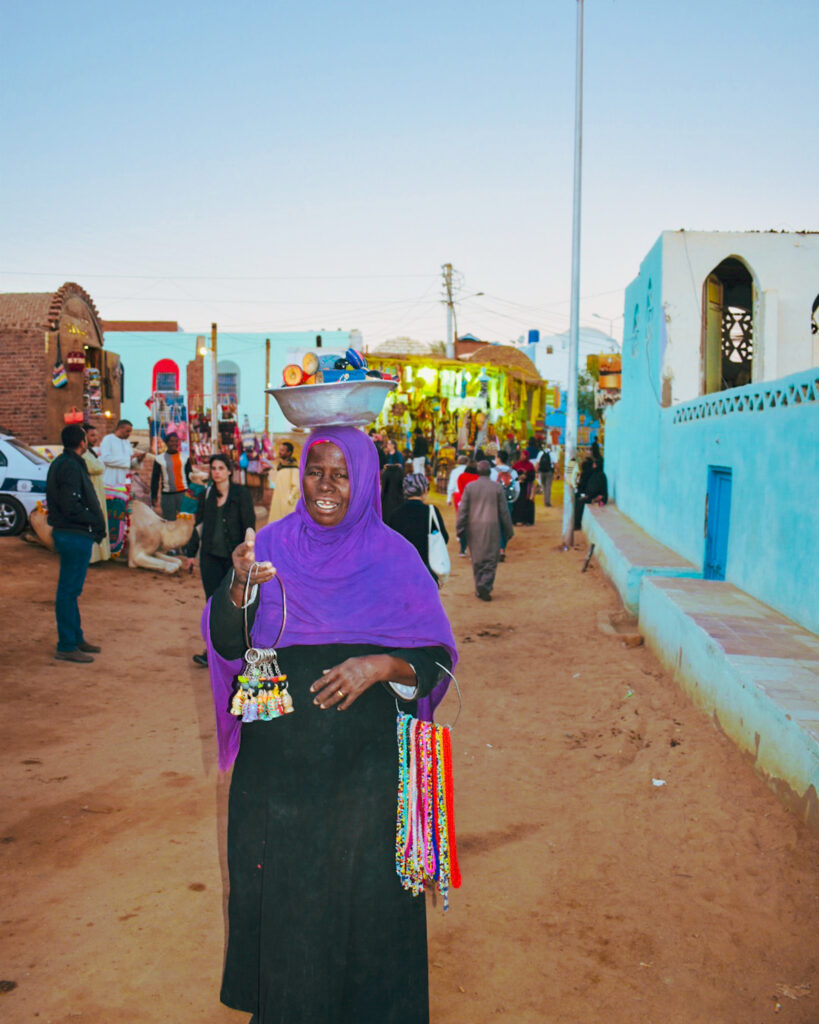
I continue to walk through the market – gazing, daydreaming, and absorbing the sights. As I turn my head, I am taken aback as I come face-to-face with a camel.
Local villagers trade handmade Nubian crafts at the market which is still mostly inhabited by Nubian indigenous people. There are also stores which are now rented out to non-Nubians, which takes some of the authenticity away.
Returning from the bazaar, a gentleman pulls up on his ride.
Man: Hey Nubian.
Me: Hi *smile*.
Man: You are very beautiful, how old are you – 26? I’m 27.
Me: *thinking* yeah, sure you are!
Man: Do you want to ride on my camel?!
Me: *shock* *thinking* Do I look like the kind of lady that rides on anyone’s camel? I’m old enough to be your mother *laughs*.

I am on the west bank of the Nile, just outside of Aswan in Gharb Soheil, one of the 60 Nubian villages in Upper Egypt.
Some history
The ancient civilization of Nubia is based along the Nile River, located in what is today northern Sudan and southern Egypt.

Both Nubia and Egypt were the centre of Africa’s main cultures, with each ruling over each other, and unified on many occasions.
The ancient Nubian (Kushite) civilization is one of if not the oldest in the world.
The regions of Nubia, Sudan, Egypt and Ethiopia are considered by some to be the cradle of civilization.
Often referred to as the “lost civilization”, when thinking of visiting Egypt, Nubia may not be a place that comes to the minds of the masses.
Ekadolli Guesthouse
Lodging at the large, vibrantly coloured Ekadolli guesthouse (Nubian for “I like you”), guesthouse owner Khaled makes me feel like part of the family immediately upon entering. He received me with an authentically warm smile, glistening eyes and a firm handshake.

Khaled invited me to lunch with him, the food was a plentiful mixture of rice, potatoes, beans, okra, flatbreads, salad and a minty juice.
He educated me on Nubian living, traditions and culture. Khaled is exceptionally kind, hospitable and has a devoted team that genuinely help make Ekadolli feel like home.
The team speak minimal if any English and one staff member is deaf, but interaction still appears to flow somewhat effortlessly, and everyone is very sincere.

The terrace in the evening has a pleasantly lit view of other Nubian villages. The area is very quiet though you do hear the occasional call to prayer, as heard throughout Egypt from time to time.

I was informed by Khaled that a long time ago, before the erection of the high dam, the chief source of income for the Nubian village was fishing. Today there is a lot more focus on education with three schools in the village.
Khaled studied at Cairo University and had verbal altercations with lecturers because of the exclusion of Nubian pharaohs.
The lecturer agreed with Khaled but maintained that is what they have to teach. Khaled declared “look at their features, they are mine”. Indeed they are, the Nubian civilization is not lost, but rather forgotten.
Numerous Nubians were forced to relocate when the Aswan high dam was built in the 1960s due to flooding. At this time, much of Nubia’s history, particularly smaller monuments/artefacts, disappeared underwater.
Larger monuments, like the infamous Abu Simbel, were salvaged and relocated. Many Nubians are still seeking recompense.
Abu Simbel
Abu Simbel is a celebrated Nubian monument built by Ramses II and is an obligatory visit. Being close to the Sudan border, it required a 03.30am wake-up call but believe me, it is worth it.
The voyage is approximately a three-hour drive from the city of Aswan through a sea of sand with countless mini pyramids appearing along the way.
I even spied a mirage, and though there was nothing but desert, I immediately felt compelled to run to the sheet of water. My mind was playing tricks on me. Logic would tell me that it couldn’t possibly be nature’s nectar, yet I still desired to move to it.

Upon reaching Abu Simbel after being dropped off at the parking lot I walked eagerly for approximately five minutes towards the two temples.
As I marched around the corner of the cliff I sight the four colossal statues of the pharaoh faced towards the sun, looking out over the crystal-clear waters of Lake Nasser. Next to it is a smaller temple dedicated to his wife Queen Nefertari.
My jaw opens, and my eyes widen, all I could say was “wow” as I hoist my neck in amazement. I was awe-inspired upon entering the temple adorned floor-to-ceiling with glorious hieroglyphics illustrating the victorious battles of Pharaoh Ramses II.
I found it hard to sleep that night as my spirit felt like it was travelling through the afterlife.
Nubian Museum
The following day I visited the Nubian Museum in Aswan and this further helped to piece together the history and different dynasties of Nubia.
Even this recognition had to be fought for as the government initially wanted it to be called the “Aswan Museum”. After resistance, it remains the Nubian Museum, though much of the land, culture and architecture has gone.
As the face of Egypt, after many conquests, is now mainly Arab, some may be surprised when they come to Nubia to see the “forgotten” face of Egypt/Nubia.
I spent two days in the Nubian village. It is slightly further out from the city of Aswan, but Khaled provided a taxi or drove me himself when I needed.
I often gaze at people, observing the plenitude of faces that I don’t usually see in such abundance in modern-day Egypt.
In the Nubian village, Aswan and Nubia in general, most of the faces are like mine. I had many people calling out to me “hey Nubian, hey sister, hey cousin, we’re the same colour”.

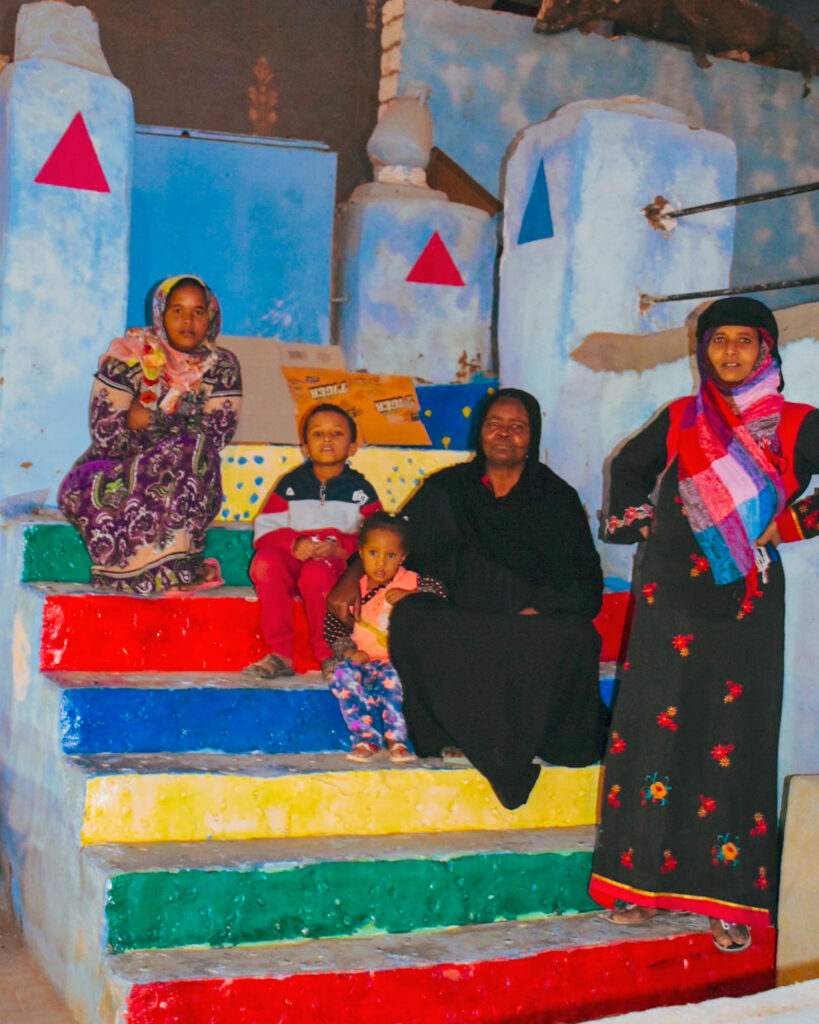
Is the Nubian Village in Egypt worth visiting?
Going to Nubia really helped me to get a solid understanding of the importance of Nubia’s place in history.
Though I could watch countless videos and read many articles, to be there on a land so rich with history, and to see faces so familiar, made me feel, live and know it.
I recommend visiting Egypt in the cooler months of March, April, November, and December if you plan to enter pyramids, tombs and temples.
Egypt is relatively cheap, and the Nubian village accommodation rates are very reasonable. A stay at the guesthouse for two nights cost just USD$77, including breakfast (https://www.booking.com/hotel/eg/ekadolli-nubian-guesthouse-aswan.en-gb.html). The service you receive here is second to none!
Were you aware of Nubia’s presence in Egypt?
